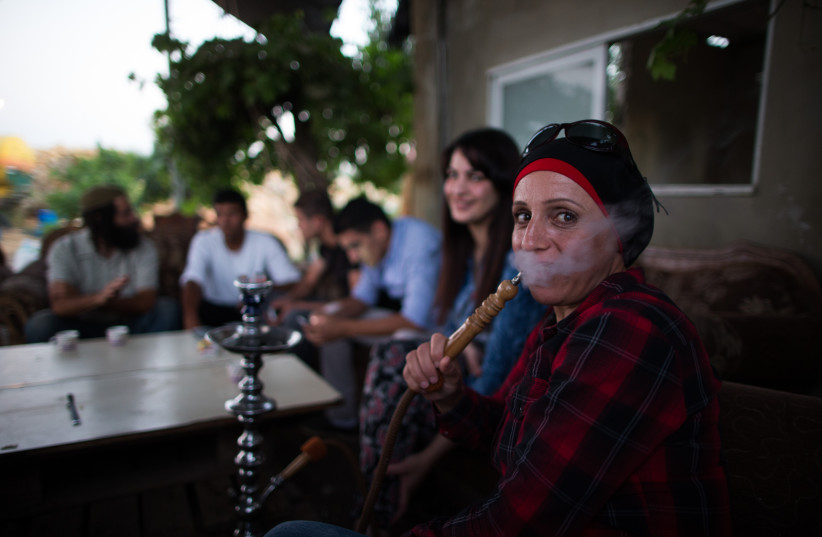Public health officials have noted a significant increase in the sale and use of tobacco for hookahs (nargilas, or tobacco-smoking water pipes), but they haven’t identified who is using them in order to refer them to addiction help.
Now, staff at the Zefat (Safed) Academic College and the Arab National Society for Health Research and Society have come up with a way to find out. They developed a machine-learning algorithm to examine the link between hookah smoking and socioeconomic characteristics, health status and behaviors and knowledge.
In an article in the latest (April) issue of the Israel Medical Association Journal, the authors wrote in a six-page study that they held face-to-face interviews in 2015-16 with 2,046 Israeli-Arabs over the age of 18 who are most likely to use hookahs.
They asked them about their health status, tobacco use of all kinds and other factors. Using machine learning – a branch of artificial intelligence that analyzes data, automates analytical model building, identifies patterns and makes decisions with minimal human intervention – they built a prediction model based on eight factors.
Of the total group interviewed, 13% smoked hookahs. Of the 18- to 34-year-old age group, almost a fifth used nargilas. Younger and more-educated men were more likely to have this addictive habit, as were those with an inferior knowledge of health (such as the importance of eating vegetables and preventing accidents and injuries) and the employed, and women who were heavy consumers of energy drinks, consumers of alcohol and the unemployed.

“This behavior recently became a trend among youth and is threatening to become the second most common health concern after cigarette smoking,” they wrote. Water pipes – regarded in the Arab sector and among many young Jews as acceptable social behavior and part of the leisure culture – have been found to be as dangerous as smoking cigarettes.
"Often, teenagers smoke nargilas together with their parents. It has also become a habit among immigrants from the former Soviet Union and Arab women," the authors wrote.
Hooklahs cause a high prevalence of chronic disease, chronic obstructive pulmonary disease, cancer and cardiovascular and infectious disease such as tuberculosis, all of which have to be treated at public expense by the health funds and the hospitals. They are also linked to other risky health behaviors including alcohol consumption and recreational drug use.
The researchers were surprised that the more educated and young people were more likely to smoke hookahs than the poorly educated and older people because nargilas are usually associated with a “traditional behavior” among adults.
“We believe that in this specific population, the effort of health educators and promoters should focus on a false image of ‘coolness’ of hookah smoked by the educated and young and emphasize its major health risk.” They concluded that machine learning has been used extensively in medical research but not in the study of health behaviors, and recommended that it become a frequently used tool in this field.
